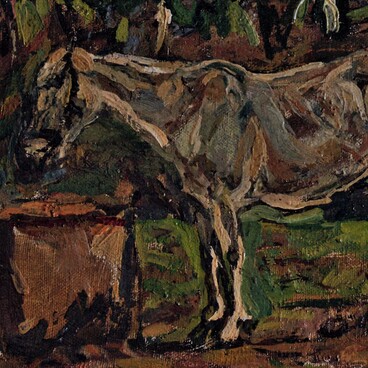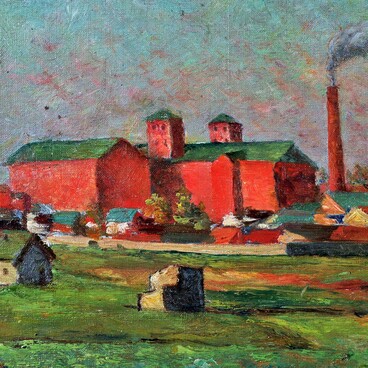The exhibition of the Shebekino History and Art Museum contains several works of the artist Igor Kolesov. Many of his paintings were devoted to the nature of the Shebekino region.
Kolesov was born in 1956 in the village of Platovets in the Kursk region. After graduating from school he entered the Buturlinovskoye Art And Graphic Arts Teacher Training College, where his three brothers studied. The painter devoted his diploma work to the sea.
Kolesov was assigned to teach drawing and drafting in the village of Grebenskaya in the Chechen Republic. One of his works of those years — “Aksakal” — was donated to the Shebekino Museum by the heirs of the artist. Then, Kolesov served in the army in Novocherkassk, and after demobilization he returned to his home village and worked again as a teacher.
In 1983, Igor Kolesov came to Shebekino and got a job as a graphic artist at a biochemical plant. He then taught painting classes at the city’s Art School, and afterward was hired as an artist in an art studio.
The main genre in the works of Kolesov was landscape. He painted most often in plein air — from life, in the open air. Because of this, he was able to capture and transfer even smallest details in the world around him onto canvas.
In the painting “Chalk Mountain” Kolesov depicted the Arkhangelskoe settlement, an archaeological monument in the Shebekino district. In the 8th — 10th centuries Alan tribes lived there; they were part of the Khazar Khaganate, a major medieval state. The artist painted an autumn sunny day: the forest had already begun to turn yellow, but the grass on the hills was still green. On the right side you can see chalky slopes — rocks deposits. There are relict pine trees that protect the minerals from leaching and weathering.
To convey the lyricism of the landscape in Arkhangelskoye, Kolesov chose a muted color palette: yellow, green and white. He used numerous shades of paint, which created a play of light and shadow: chalk hills were illuminated and, in contrast, a slope with grass and boulders was in the shade.
In the 1990s, two personal exhibitions of Igor Kolesov were held in Shebekino History and Art Museum. Also, he exhibited his works in Moscow, Warsaw, Voronezh and Kharkov.
Kolesov was born in 1956 in the village of Platovets in the Kursk region. After graduating from school he entered the Buturlinovskoye Art And Graphic Arts Teacher Training College, where his three brothers studied. The painter devoted his diploma work to the sea.
Kolesov was assigned to teach drawing and drafting in the village of Grebenskaya in the Chechen Republic. One of his works of those years — “Aksakal” — was donated to the Shebekino Museum by the heirs of the artist. Then, Kolesov served in the army in Novocherkassk, and after demobilization he returned to his home village and worked again as a teacher.
In 1983, Igor Kolesov came to Shebekino and got a job as a graphic artist at a biochemical plant. He then taught painting classes at the city’s Art School, and afterward was hired as an artist in an art studio.
The main genre in the works of Kolesov was landscape. He painted most often in plein air — from life, in the open air. Because of this, he was able to capture and transfer even smallest details in the world around him onto canvas.
In the painting “Chalk Mountain” Kolesov depicted the Arkhangelskoe settlement, an archaeological monument in the Shebekino district. In the 8th — 10th centuries Alan tribes lived there; they were part of the Khazar Khaganate, a major medieval state. The artist painted an autumn sunny day: the forest had already begun to turn yellow, but the grass on the hills was still green. On the right side you can see chalky slopes — rocks deposits. There are relict pine trees that protect the minerals from leaching and weathering.
To convey the lyricism of the landscape in Arkhangelskoye, Kolesov chose a muted color palette: yellow, green and white. He used numerous shades of paint, which created a play of light and shadow: chalk hills were illuminated and, in contrast, a slope with grass and boulders was in the shade.
In the 1990s, two personal exhibitions of Igor Kolesov were held in Shebekino History and Art Museum. Also, he exhibited his works in Moscow, Warsaw, Voronezh and Kharkov.



